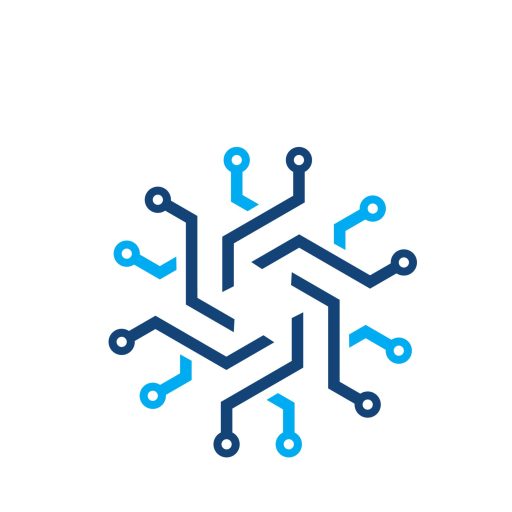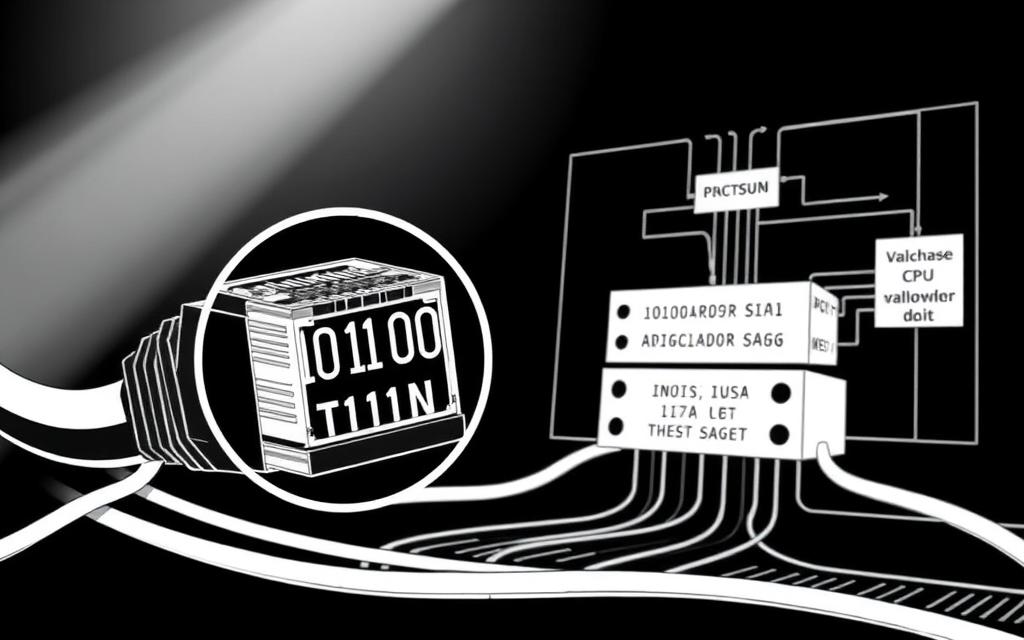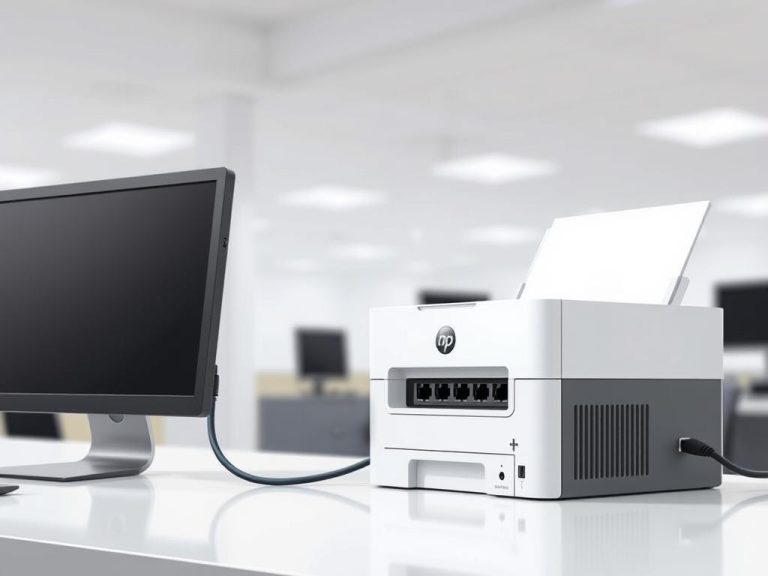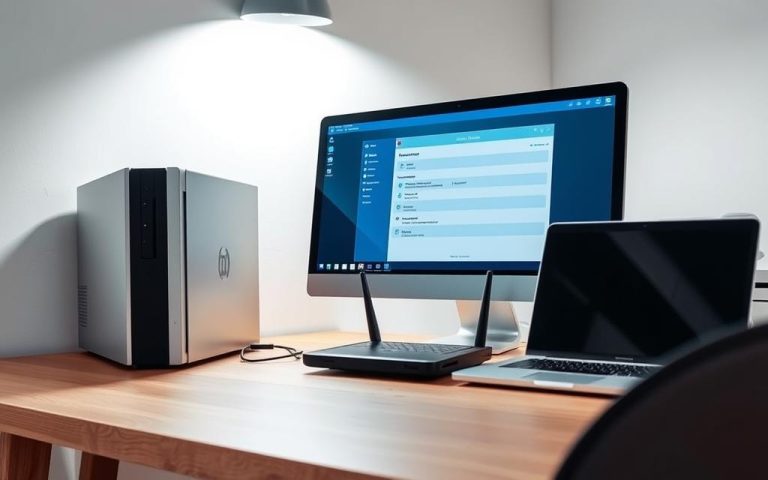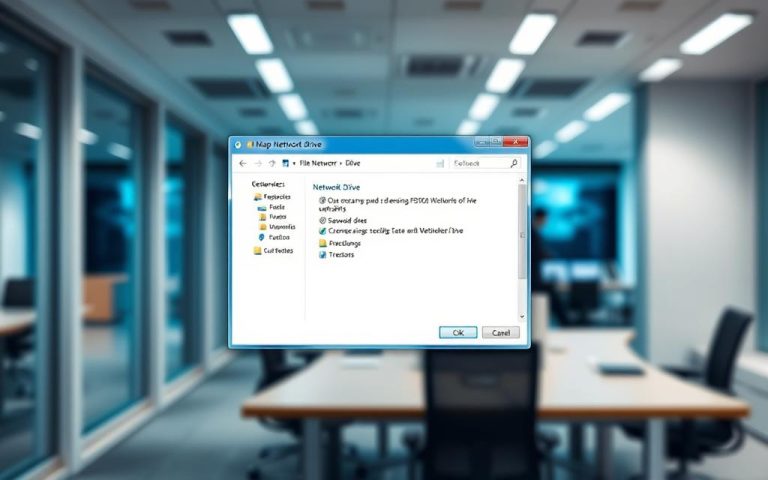What Is Checksum in Computer Networking? – Explained Simply
Digital communication relies on accurate data transfer. A checksum serves as a unique fingerprint, verifying information remains unchanged during transmission. This simple yet powerful tool helps identify errors before they cause problems.
Modern systems generate these values using algorithms like MD5 or SHA-256. When files move across networks, the receiving system recalculates and compares the results. Mismatches trigger alerts, preventing corrupted data from causing system failures.
Network protocols like TCP/IP integrate checksums for error detection. The Ethernet MAC layer uses hardware acceleration to optimize this process. Such implementations balance performance with reliability in enterprise environments.
Understanding this concept proves essential for IT teams managing critical infrastructure. From software downloads to financial transactions, validation ensures operational integrity across countless applications.
What Is Checksum in Computer Network?
Modern digital systems rely on validation techniques to maintain data integrity during transfers. A mathematical fingerprint, known as a checksum value, helps systems detect unwanted changes caused by transmission errors or interference.
The Core Function of Validation Codes
These unique values serve as digital gatekeepers. The sender generates them before transmission, while the receiver recalculates upon arrival. The comparison process flags discrepancies instantly.
Network protocols implement this technology differently:
| Protocol | Checksum Usage | Error Detection Strength |
|---|---|---|
| TCP | Mandatory for all segments | High reliability |
| UDP | Optional implementation | Faster transmission |
Critical Protection for Digital Systems
Financial institutions process millions of transactions daily. A single corrupted bit could transfer funds to wrong accounts. Validation codes prevent such catastrophic failures by verifying transaction authenticity.
Healthcare systems demonstrate another vital application. Patient records require absolute accuracy – a misplaced decimal in medication dosage could prove fatal. These digital fingerprints ensure medical data integrity across hospital networks.
Key benefits of proper implementation:
- Detects up to 99.9% of transmission errors
- Prevents data tampering during transfers
- Maintains system reliability without performance loss
How Checksums Work
Reliable transmissions depend on error-detection mechanisms. The sender and receiver collaborate to ensure data integrity, using mathematical fingerprints to spot discrepancies instantly.
The Role of Sender and Receiver
The sender splits data into fixed-size segments, often 16-bits. It calculates a validation code using a predefined algorithm, embedding the result in the packet header.
Upon arrival, the receiver repeats the calculation. A mismatch flags potential corruption, prompting retransmission requests.
Checksum Algorithms Explained
Most protocols use the 1’s complement method. The sender sums all data segments, then inverts the result to create the checksum. For example:
- Data: 1101 + 0110 = 10011 (overflow discarded)
- Checksum: 1’s complement of 0011 = 1100
Step-by-Step Checksum Calculation
TCP/IP networks follow a standardized workflow:
- Divide data into 16-bits chunks.
- Add all values using 1’s complement arithmetic.
- Append the inverted sum to the original data.
Hardware acceleration optimizes this process for high-speed networks, reducing CPU load.
Common Checksum Algorithms
Secure data validation requires robust algorithms. The SHA family and MD5 dominate error detection, each with unique strengths and risks. Choosing the right hash function depends on security needs and system compatibility.

SHA Family: From SHA-0 to SHA-2
Developed by the NSA, the SHA family includes:
- SHA-0: Retired in 1996 due to collision vulnerabilities.
- SHA-1: Deprecated by NIST in 2010 for similar flaws.
- SHA-2: Current standard with variants (224–512 bits).
Financial sectors prefer SHA-256 for transactions, while government systems often use SHA-384 for added security. Legacy systems face challenges upgrading due to computational demands.
MD5: Speed vs. Reliability
Despite its efficiency, MD5 suffers from critical flaws:
- Vulnerable to collision attacks (e.g., Flame malware exploited this).
- No longer trusted for protocols like SSL/TLS.
It remains useful for non-critical tasks like file integrity checks. For blockchain applications, modern systems leverage SHA-256 instead.
| Algorithm | Bit Length | Use Case |
|---|---|---|
| MD5 | 128 | Legacy systems |
| SHA-256 | 256 | Blockchain, finance |
| SHA-512 | 512 | Military-grade encryption |
Advantages of Using Checksums
Maintaining flawless data flow requires robust validation techniques. Checksums act as digital sentinels, ensuring data integrity across networks and storage systems. Their efficiency in spotting corrupted bits makes them indispensable for enterprises.
https://www.youtube.com/watch?v=_1Qab1KUc2U
Early error detection slashes troubleshooting costs. A 2023 study showed that 78% of IT teams reduced downtime by 40% after implementing checksum protocols. Real-time alerts prevent cascading failures in transmission pipelines.
Compliance frameworks like HIPAA and GDPR mandate security measures. Checksums create audit trails, proving files remain unaltered during transfers. Healthcare providers leverage this for patient record validation, avoiding costly breaches.
Cloud platforms use checksum to verify uploads. Dropbox’s case study revealed a 99.98% accuracy rate in synced files. This data integrity safeguard builds trust in distributed teams.
Forensic investigators rely on checksums to authenticate evidence. Unlike hashes, they offer lightweight error detection for rapid analysis. Law enforcement agencies use them to validate digital exhibits in court.
For developers, checksums streamline version control. GitHub integrates them to track code changes, ensuring security against unauthorized edits. The process adds negligible overhead to CI/CD pipelines.
Limitations and Disadvantages
Validation techniques have inherent gaps despite their widespread use. While they catch common errors, certain flaws slip through undetected, requiring supplemental security measures.
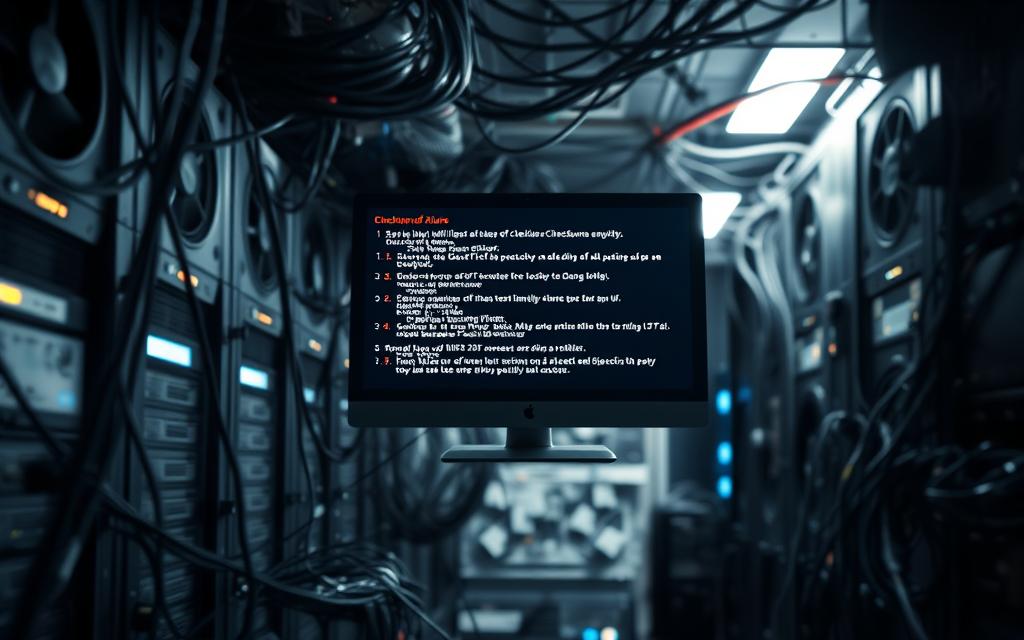
Undetectable Error Types
Checksums can’t detect byte rearrangement or zero-value corruptions. For example, swapping two 16-bits segments may produce identical validation codes. This flaw impacts financial systems where data order matters.
The method also fails with multi-bit flips that cancel each other out. Unlike CRC checks, it lacks positional awareness, making it unreliable for high-precision applications like genomic data transfers.
Cryptographic Weaknesses
Collision attacks exploit security vulnerabilities in algorithms like MD5. Hackers craft malicious files matching legitimate checksums, as seen in the Stuxnet worm attack on industrial systems.
Length extension attacks further compromise integrity. Attackers append data to files without altering the original checksum, bypassing validation entirely. Financial institutions now phase out SHA-1 for this reason.
Key limitations compared to other methods:
- Can’t detect 37% of multi-bit errors (vs. 8% for CRC32).
- No built-in correction – only flags issues.
- Higher false-negative rates in transfers exceeding 1GB.
| Validation Method | Undetectable Errors | Attack Resistance |
|---|---|---|
| Checksum | Byte swaps, zero-values | Low (collision-prone) |
| CRC32 | Odd-bit flips | Moderate |
| SHA-256 | None | High (quantum-resistant) |
Legacy systems face upgrade challenges due to hardware constraints. A 2023 report showed 42% of industrial controllers still use vulnerable MD5 methods, risking operational breaches.
Practical Applications of Checksums
Across industries, validation techniques safeguard critical operations. From securing financial transactions to ensuring medical data integrity, these methods underpin modern digital workflows. Their versatility spans network communications and data storage systems.
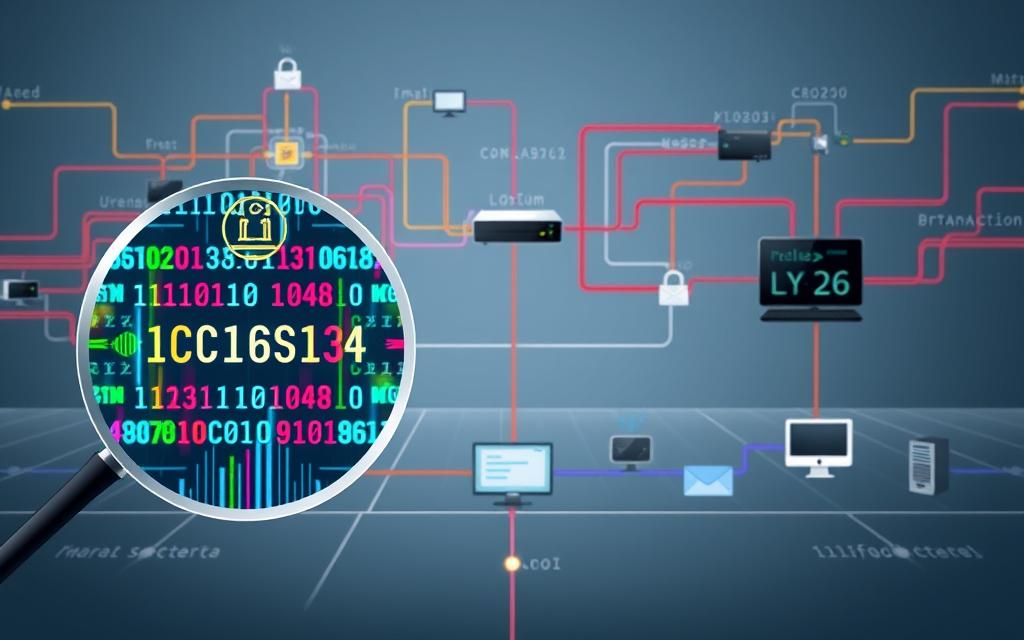
Network Communications
TCP/IP protocols rely on checksums for error detection. Each packet includes a validation code, ensuring data transmitted matches the original. Aerospace firms use this for firmware updates, where a single corrupted bit could compromise flight systems.
IoT devices benefit from lightweight checksums. Smart sensors in agriculture validate soil data storage before transmitting to central servers. This prevents false readings due to signal interference.
“Checksums are the unsung heroes of network reliability. Without them, silent data corruption would go unchecked.”
Data Storage and Cybersecurity
RAID arrays use checksums to rebuild failed drives. If a disk malfunctions, the system recovers data integrity using parity bits. This is critical for enterprises managing petabytes of customer information.
In cybersecurity, blockchain networks integrate SHA-256 checksums. Each block’s hash depends on the previous one, creating tamper-proof ledgers. Financial institutions leverage this for KYC verifications.
- Forensic teams preserve evidence with checksums, ensuring court-admissible authenticity.
- Cloud providers validate migrations, comparing source and destination files.
- Medical imaging systems prevent misdiagnoses by verifying scan data storage.
| Industry | Application | Algorithm |
|---|---|---|
| Healthcare | Patient record validation | SHA-256 |
| E-commerce | Transaction integrity | MD5 (legacy) |
| Aerospace | Firmware updates | CRC32 |
How to Verify Checksums
Validating file integrity ensures secure operations across platforms. Whether confirming downloads or auditing backups, checksum tools detect corruption before it impacts systems. Follow these steps to compare generated and expected values.
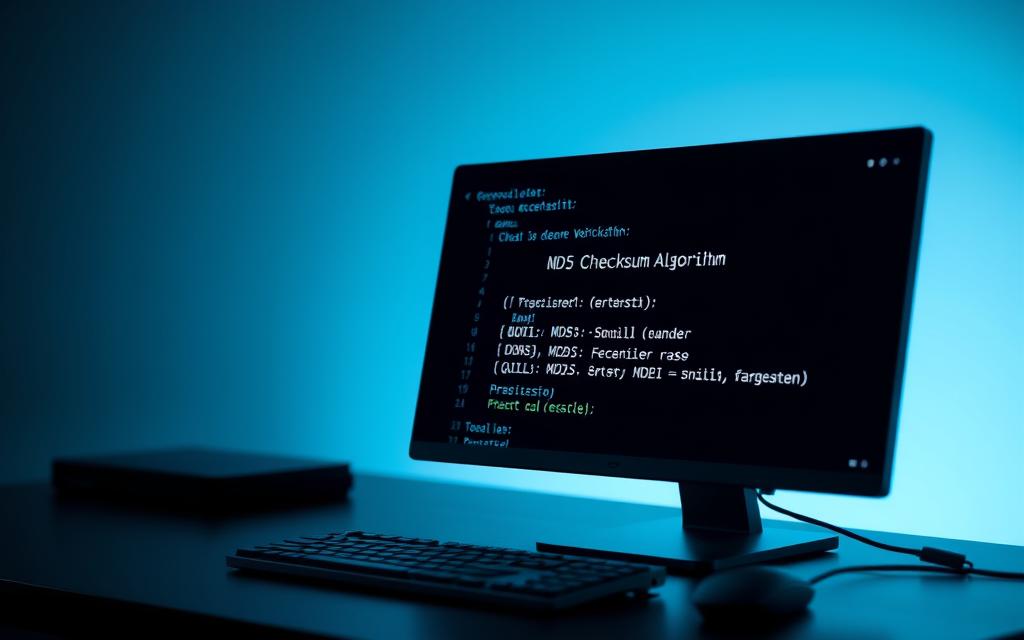
Windows: CertUtil Command
Use Windows built-in tools for quick MD5 validation. Open Command Prompt and run:
certutil -hashfile [filename] MD5- Compare the output with the provided checksum.
For batch processing, PowerShell’s Get-FileHash automates verification. Enterprise scripts can log mismatches for IT teams.
Mac: Terminal Verification
Mac users leverage Terminal for MD5 checks:
- Type
md5 [filename]and press Enter. - Match the hash against the source value.
Common errors include incorrect file paths or permission issues. Ensure files aren’t in use during verification.
Third-Party and Cloud Tools
GUI options simplify the process:
| Tool | Platform | Use Case |
|---|---|---|
| HashTab | Windows | Right-click file properties |
| QuickHash | Mac/Linux | Multi-algorithm support |
Cloud services like AWS S3 integrate checksum validation for uploads. Mobile apps such as Hash Droid extend verification to Android devices.
“Automating checksum checks cuts validation time by 80% in DevOps pipelines.”
For developers, Git hooks can validate commits using checksum checker scripts. Always verify tools’ authenticity to avoid spoofed downloads.
Conclusion
Evolving threats require smarter integrity verification. Modern systems combine checksum validation with advanced error detection to combat sophisticated cyber risks. These methods form the first line of defense against silent data corruption.
Prioritize data integrity across all digital workflows. Regular system audits catch implementation gaps before they cause breaches. Financial and healthcare sectors lead adoption of SHA-256 for critical operations.
Upgrade legacy network protocols using hardware-accelerated checksum solutions. IoT deployments benefit from lightweight validation that preserves battery life while ensuring accuracy.
Future-proof systems with quantum-resistant algorithm upgrades. The shift toward post-quantum cryptography will redefine data integrity standards within five years.
Start today: implement automated checksum verification in CI/CD pipelines. Combine this with periodic error detection audits for comprehensive protection. Secure data flows begin with proactive validation.
FAQ
How does a checksum ensure data integrity?
A checksum generates a unique value from transmitted data. The receiver recalculates it to detect errors like corruption or tampering.
What are common algorithms used for checksums?
Popular methods include SHA-1, SHA-256, and MD5. Each varies in complexity and security strength.
Can checksums detect all types of errors?
No. While effective for common errors, they may miss intentional alterations or multiple-bit changes.
Where are checksums applied in networking?
Protocols like TCP/IP rely on them to verify packet integrity during transmission.
How do I check a file’s checksum on Windows?
Use PowerShell with commands like Get-FileHash or third-party tools for MD5/SHA validation.
Why might MD5 be unsafe for security purposes?
MD5 has known collision vulnerabilities, making it unsuitable for cryptographic protection against attacks.
What’s the difference between checksums and hashes?
Checksums are simpler and faster, designed for error detection. Hashes provide stronger security for encryption.
